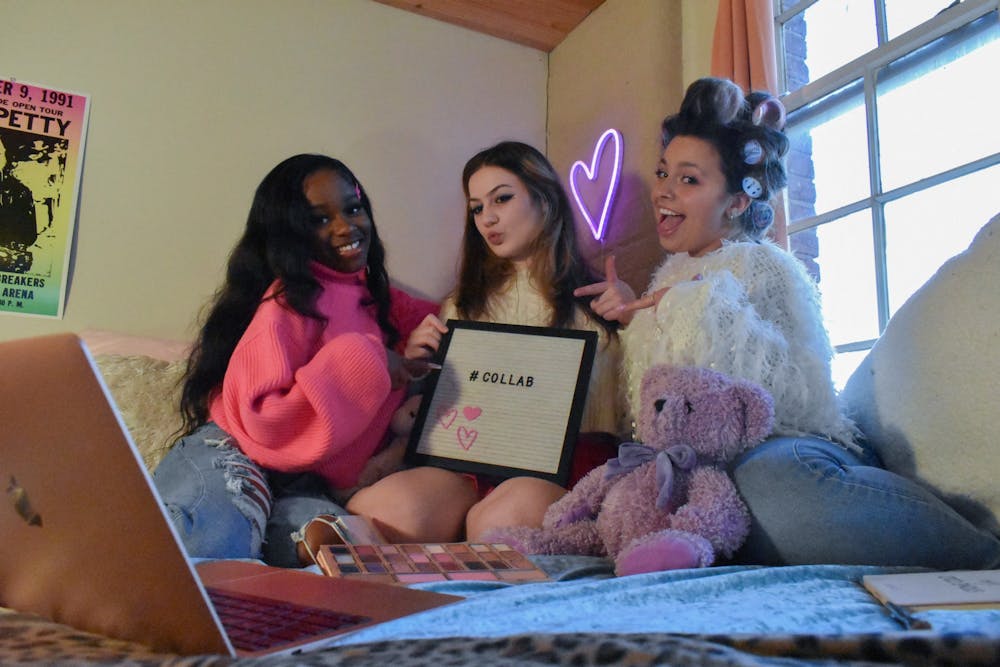So much of our generation grew up with dreams of becoming the next David Dobrik or Jaclyn Hill, of being sponsored by FashionNova or Morphe. But at the dawn of 2023, we’re left to wonder: is influencing a dying industry? Are the days of exaggerated storytimes and extravagant GRWMs coming to an end? We’ve seen so many of our favorite creators release videos titled, "Why I’m quitting Youtube,” either moving to the greener pastures of TikTok and podcasts or abandoning the limelight altogether. Even the OG TikTokers are more interested in making movies or releasing music than lip-syncing or participating in the latest dance trend. Despite all of this, influencing is still one of the most sought-after careers for young people. So, what isn't the public seeing? What is driving creators away from the platforms that brought them such success?
Relatability, honesty, humility, gratitude. All qualities we expect from the 16-25 years old who dominate our "For You" page. Arguably, there’s never been an easier platform upon which to gain a large following. All it takes is to entertain viewers for 15 seconds; that can’t be too hard. However, this current oversaturation of content has made creators much more expendable. TikToker and USC alumni Cami Surro (@camisurro) speaks about how the influencing space has changed over the last few years. She remarks, “As much as you always want to be different, all influencers do the same thing.” With trends changing so quickly due to the nature of TikTok, a lot of niche-based content creators just aren’t getting the engagement they used to. Many people ready to grab their five minutes of fame, so “You have to adapt your content to what people want to see or you’ll fall off,” Surro said.
Viewers crave a person they can sink their teeth into, someone willing to share every aspect of their life. Someone both inspirational and relatable. It's a thin line to tread. It's this pressure to share all intimate details -- the highs and lows -- that, over time, drives creators away. Once someone starts to share their life, audiences begin to feel entitled to the rest of the details. The influencers are the commodity. They’re selling themselves. It’s almost impossible not to defensively build up walls with the ridiculous standards to which we hold influencers, especially young women. There is a double-edged sword of “cancel culture," a society quick to call out anyone perceived as being fake or scripted, but just as quick to judge if their ideas don’t align with the public. The minute you oppose the masses, you had better watch out. Surro noted this fear: “You can’t say anything because people can take it the wrong way…make you look like a bad person.”
This constant pressure has driven many of the influencers of our childhood to stop creating the content that made them famous. That presents an issue because viewers don’t want to watch someone who's been changed by the industry. “She's lost touch.” “I miss his old videos.” As if the spotlight of millions of people watching your every move wouldn’t change you. When your life is engulfed in staying ahead of the trends and providing engaging content, how could you not lose sense of yourself? As we’ve seen with so many past creators, once you're a regular on red carpets, once our parents know who you are, you’ve crossed the line and lost the public's interest. If you are in the mainstream, you aren't ahead of it anymore. You have to be successful, but not too successful; rich, but not too rich; happy, but not too happy. Surro notes the fork in the road influencers face once they reach a certain level of fame: “You either give in to what you’ve turned into, or you go back to your roots.”
In this age of Alix Earle, it’s clear to see that influencing isn’t going anywhere. But as many before her have learned, the masses are both picky and fickle, as quick to abandon as they are to “stan.” So be careful, stay authentic, and keep us interested.
Models:
Ri Edinbeck: Sweater is Atlar’d State. Skirt is thrifted
Trinity Barata: Sweater is Altar’d State. Jeans are model owned from H&M
Faith James: Sweater is Altar’d State. Jeans are model owned, brand unknown
Styled by Lily Miller
Models:
Ri Edinbeck: Sweater is Atlar’d State. Skirt is thrifted
Trinity Barata: Sweater is Altar’d State. Jeans are model owned from H&M
Faith James: Sweater is Altar’d State. Jeans are model owned, brand unknown



